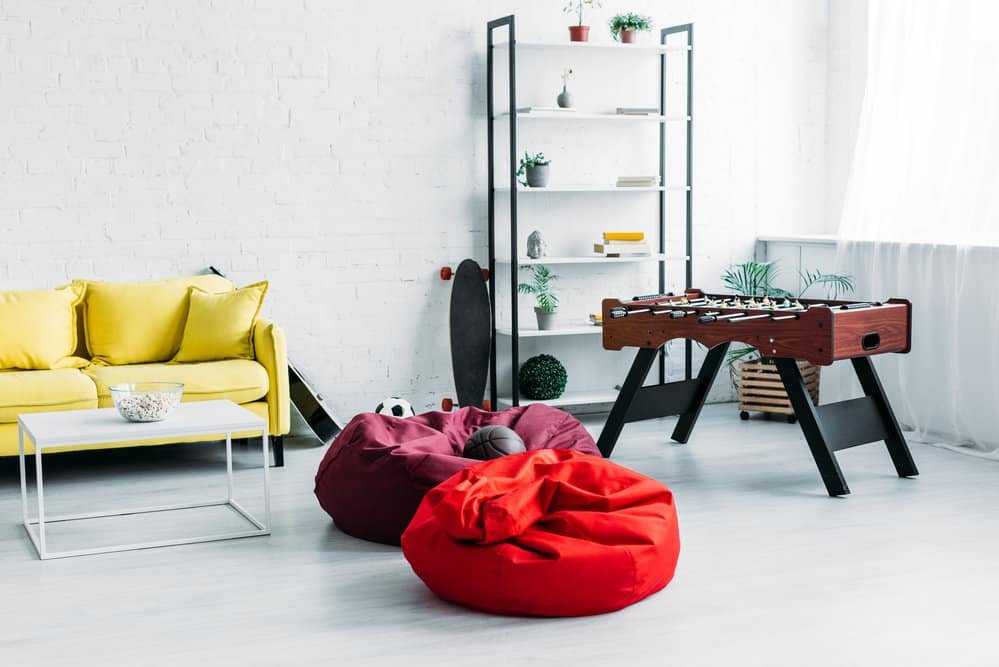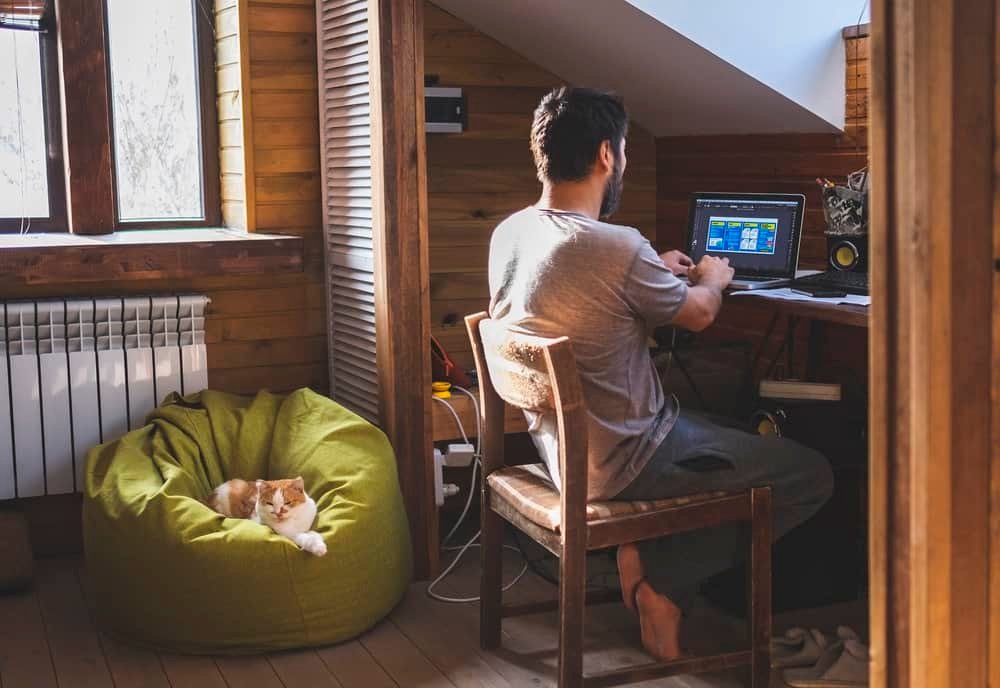How Long Does A Bean Bag Last? A Guide to the Lifespan of Your Favorite Furniture
Homebody Forever is reader-supported. We may receive a commission if you make a purchase through a link on this post.
When you use your bean bags as much as I do, you want them to last for as long as possible.
Because while I love sitting on them while working, reading, or chilling, I don’t particularly appreciate having to replace them, because filling it can be…a messy endeavor.

When it comes to the lifespan of a bean bag, many factors come into play. Usage, material quality, and exposure to elements like sunlight and humidity can all impact its durability. Proper care and maintenance can extend your bean bag’s life.
Typically, a bean bag can last up to five years, but there will be instances where you might need to replace them earlier. Look for signs of wear and tear, reduced comfort, or decreased support.
Factors That Impact Durability
Let’s start by breaking down the factors that impact durability.
Outer Materials (Covers)
The type of material used for the outer cover of your bean bag plays a significant role in determining its lifespan. Some materials, such as cotton, linen, and chenille, are highly durable and can last for years with proper care. Other materials like faux fur and suede can be more delicate and need a lot of maintenance to last as long.
Vinyl bean bag covers offer excellent durability while being resistant to tear, rips, and cracks. Leather bean bags are highly durable and can last a long time, provided that you take good care of it.
Fillings
What you choose to fill your bean bag with can also impact its lifespan.
Polystyrene beads are a common choice because they offer a balanced combination of comfort and durability. However, they may need to be replaced after a few years, because they do compress the more you use them.
Fillings like memory foam or shredded foam can provide more extended-lasting support and maintain their shape better over time.
Frequency of Use/Care
How often you use and care for your bean bag can also affect its lifespan. The more you use something, the faster it will wear and tear.
In addition to the frequency of use, how it gets used can also impact the lifespan. Do you have pets that like to, ahem, scratch it for play? Do you have young children that are likely to spill stuff on it? Do you eat or drink on it a lot? These things can also shorten a bean bag’s lifespan and require you to be more vigilant with spot cleaning and maintenance.

External Factors/Environment
Exposure to certain environmental or external factors can also shorten your bean bag’s lifespan. For example, exposure to direct sunlight can cause materials to fade and weaken over time.
Humidity, moisture, and temperature fluctuations can also cause materials to deteriorate faster. If you want to extend the life of your bean bag, consider placing it in an area with minimal direct sunlight and reasonable temperature control.
Tips for Making Your Bean Bag Last Longer
To ensure that your bean bag lasts as long as possible, here are a few tips that you can follow:
- Regularly fluff your bean bag: Fluffing your bean bag helps maintain its shape and keeps the filling evenly distributed. Just gently pick it up, shake it, and roll it around on the floor.
- Clean and maintain: Keep your bean bag clean by wiping the cover with a damp cloth and mild detergent. Most bean bags have removable and washable covers, making them easy to maintain. And as annoying as regular cleaning can be, they will make your bean bag last longer.
- Avoid direct sunlight: Sunlight can cause the fabric color to fade and weaken the material over time. It’s best to place your bean bag in a shaded area or use curtains or blinds to block direct sunlight.
- Be cautious with sharp objects: Keep sharp things like scissors, knives, or keys away from your bean bag, as they can easily puncture or tear the fabric. Small tears can worsen over time, and you might have to replace the covers sooner than expected.

How to Know When to Replace Your Bean Bag
There will come a point, though, when you will have to replace your bean bag.
One major indication that your bean bag needs replacement is a loss of shape and comfort. If you find yourself sinking and feeling the ground as you sit on your bean bag, this may mean the filling inside has compressed or reduced in volume and it’s time to replace your old fillings with new ones.
Another sign to look for is the fabric’s condition. If you notice any rips, tears, or fraying seams on your bean bag cover, it’s time to replace them. (You can also mend it manually, but I’m useless with needles or a sewing machine). Holes in your bean bags are a nightmare because they can cause fillings to fall out, cause a big mess, and for your bean bag to lose its shape.)
Sometimes, your bean bag may begin emitting unpleasant odors. This can come from spilled liquids, sweat, pet fur, or mildew buildup. Regular cleaning can help extend your bean bag’s life, but if the foul smell persists, it might be time to invest in a new bag.






